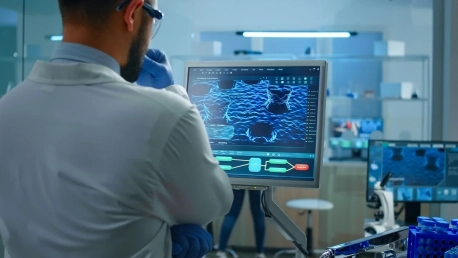Brianza’s healthcare system is undergoing a significant transformation, courtesy of AI’s role in enhancing medical imaging across its hospitals. This innovative integration is propelling the diagnostic sector into a new era of efficiency and accuracy. As AI technology becomes more advanced, it enables faster processing and interpretation of medical images, which is pivotal in early disease detection and treatment planning. With AI’s ability to learn from vast amounts of data, radiologists are now equipped with tools that can detect abnormalities with higher precision than ever before. This not only optimizes patient outcomes by enabling more personalized and timely care but also streamlines the workflow for healthcare professionals. The move towards AI-assisted diagnostics signifies a progressive shift in how medical care is delivered and highlights Brianza’s commitment to incorporating cutting-edge technology to improve patient care. This evolution in medical practices demonstrates how AI can complement human expertise to enhance healthcare services, setting a benchmark for others to follow in the pursuit of medical excellence.
The Impact of AI on Diagnostic Processes
Revolutionizing CT Scans and MRI
The integration of artificial intelligence into medical imaging, specifically in CT and MRI technologies, has markedly enhanced diagnostic capabilities. AI’s influence on medical imaging has led to significantly shorter scanning durations. This advancement is particularly beneficial for patients in critical condition or those unable to communicate effectively, such as stroke victims. AI’s contribution to image precision is notable; it allows clinicians to detect intricate details that were previously overlooked. These improvements are not just about efficiency; they drastically improve patient care by providing a more comprehensive and accurate diagnosis. The enriched clarity and detail due to AI algorithms translate into better-informed treatment strategies, potentially altering patient outcomes. This technological evolution underscores AI’s pivotal role in modernizing medical diagnostics and patient treatment protocols.
Non-Invasive Cancer Diagnostics
AI’s role in medical imaging has become increasingly pivotal, particularly for detecting cancers like those affecting the liver. The capacity for early recognition of such diseases is determinative in the success rates of treatments. Conventional diagnostic methods often involve invasive procedures, notably biopsies, which can be uncomfortable and risky for patients. However, the sophistication of AI algorithms now offers enhanced imaging clarity, empowering healthcare professionals to make more assured and precise diagnoses, thereby mitigating the need for invasive diagnostic approaches. This advancement marks a significant stride in medical technology, optimizing patient experience by minimizing the need for uncomfortable procedures while ensuring that critical diseases are identified promptly and accurately, facilitating timely and effective interventions.
Enhancements in Hospital Infrastructure
Upgrading with State-of-the-Art Equipment
Led by Daniela Motta, the clinical engineering division has achieved a significant milestone by securing €4.7 million in national funding aimed at modernizing the hospital system within Brianza with top-tier medical imaging technology. This investment has been pivotal for the healthcare network, culminating in the procurement of 16 cutting-edge imaging devices. The distribution and integration of these advanced machines throughout the Brianza hospitals exemplify the network’s unwavering dedication to embracing modern healthcare techniques and ensuring that patient care is supported by the most sophisticated medical equipment available. With these improvements, the hospitals within this network are poised to vastly enhance diagnostic capabilities, thereby elevating the overall standard of medical services provided to patients. This strategic enhancement of healthcare infrastructure positions the Brianza hospital network at the forefront of medical innovation in providing exceptional care.
Addressing Operational Challenges
Hospitals in the Brianza region are experiencing a surge in medical procedures thanks to the incorporation of cutting-edge technology. Vimercate hospital alone reports nearly 90,000 procedures annually. However, this rise in activity brings about substantial logistical issues, particularly when it comes to managing the waiting times for patients. To address these challenges, healthcare facilities are looking to optimize operational schedules by staying open for extended hours and are actively seeking out new methods to efficiently navigate patient traffic. These strategies are crucial in enhancing the availability and promptness of healthcare services. The goal is to establish a system that not only meets the increased demand but also maintains high standards of patient care. By refining these logistical aspects, the hospital network aims to provide a smoother, more responsive experience for those in need of medical attention.
The Symbiosis of AI and Human Expertise
The Undiminished Role of Human Specialists
In the modern healthcare setting, the intersection of AI and human expertise is no more apparent than in the medical imaging department of Vimercate hospital. Here, artificial intelligence tools are transforming the way imaging data is analyzed. However, the critical input of 21 expert radiologists, backed by a team of 40 professionals, is what ensures the integrity of the diagnostic process. These specialists are indispensable in interpreting AI-provided data, confirming diagnoses, and crafting tailored treatment strategies for individual patients. This collaboration between technology and the human touch exemplifies the balance necessary within the medical field; AI extends the capabilities of medical imaging, yet it is the seasoned judgment of healthcare professionals that stands as the foundation for delivering exceptional patient care. This synergy affirms the belief that even in an era of rapid technological advancement, the nuanced skills of human practitioners are irreplaceable, fostering a high standard of healthcare delivery.
Continuous Advancement in Specialized Fields
The evolution of AI in medical imaging marks a significant transformation in areas like cardiology, mammography, and prostate care. AI’s integration is advancing these specialties, pushing the capabilities of medical tech further. As this progression unfolds, professionals are increasingly required to master both AI tools and their respective fields to set higher standards in patient care. In essence, the synergy between AI sophistication and expert medical knowledge is reshaping healthcare benchmarks. The commitment to excellence in these domains is critical, with a keen focus on advancing current methodologies and improving diagnostic precision. As AI becomes more refined, it not only complements but also enhances the work of healthcare practitioners, paving the way for innovative treatment approaches and improved patient outcomes. The combined effort of AI and human expertise is poised to continue this forward momentum, making it an exciting time in the evolution of medical imaging.









